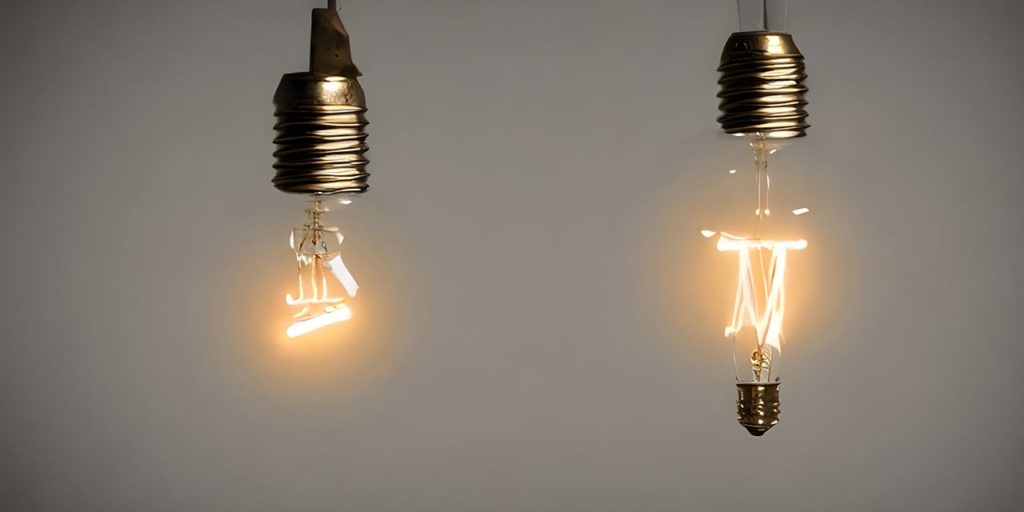Introduction
In the world of indoor gardening, the relationship between wattage and light intensity holds the key to nurturing thriving plants. As you embark on your journey to cultivate a lush and vibrant indoor garden, understanding how these two factors interact is essential. In this blog post, we will unravel the intricate connection between wattage and light intensity, exploring their profound impact on plant growth, energy efficiency, and the overall success of your horticultural endeavors.

I. Defining Wattage and Light Intensity
When it comes to lighting, wattage refers to the amount of energy consumed by a light source. It’s a familiar metric, often associated with the brightness of a bulb. On the other hand, light intensity measures the amount of light that reaches a specific area, often expressed in units like lux or foot-candles. Light intensity is a critical factor in determining a plant’s ability to photosynthesize, produce energy, and thrive.
In the world of plants, light is life. It fuels photosynthesis, the process by which plants convert light energy into chemical energy, creating the foundation of their growth. The connection between wattage and light intensity directly influences this process.
II. Factors Affecting Light Intensity
While wattage plays a significant role in determining light intensity, it’s not the sole factor. The distance between the light source and the plants, the angle of light dispersion, and the reflective properties of your indoor gardening space all contribute to the final light intensity that your plants receive.
Picture this: a high-wattage light source placed too far from your plants might result in diminished light intensity by the time it reaches the foliage. Similarly, the angle at which light is emitted can affect how it’s distributed across your plant canopy, creating varying intensities. Additionally, the reflective surfaces in your growing area can bounce light around, influencing the overall intensity that your plants experience.
III. Light Distribution and Coverage Area
The interplay between wattage and light intensity becomes particularly evident when we consider light distribution across your indoor garden. Higher wattage lights often have the advantage of providing a more uniform coverage area. This means that plants placed further away from the light source still receive a sufficient amount of light.
However, lower wattage lights might require a more strategic approach to placement to ensure even light distribution. Ensuring optimal coverage is essential for maintaining consistent growth and preventing certain areas from receiving too little or too much light.
IV. Matching Wattage to Plant Needs
Selecting the appropriate wattage for your indoor garden involves understanding the light intensity requirements of your specific plants. Different plant species and growth stages demand varying intensities. For instance, seedlings and plants in the vegetative stage require less intense light compared to those in the flowering stage, which need higher light levels to produce robust buds.
By matching the wattage of your grow lights to your plants’ needs, you’re ensuring that they receive the ideal amount of light to flourish. Striking this balance is fundamental to achieving healthy growth and maximum yield potential.
V. Balancing Intensity and Energy Efficiency
While we all want our plants to receive ample light for optimal growth, there’s an important balance to consider: the relationship between light intensity and energy efficiency. Higher wattage lights tend to provide more intense light, promoting vigorous growth. However, this can come at the cost of increased energy consumption and higher utility bills.
Efficiency-minded indoor gardeners often seek the sweet spot where they can provide sufficient light intensity while maximizing energy savings. This involves strategic light placement, utilizing reflective materials to enhance light distribution, and considering the use of energy-efficient lighting technologies.
VI. Technological Advances and Light Intensity
The advent of LED technology has revolutionized the indoor gardening landscape, presenting a pathway to achieving higher light intensity without excessive wattage. LED grow lights offer enhanced light intensity and spectrum control while consuming significantly less energy compared to traditional lighting options.
LEDs allow you to fine-tune the light spectrum, intensity, and photoperiod to cater to your plants’ specific needs. This level of customization not only promotes growth but also minimizes energy wastage, aligning perfectly with the sustainable practices embraced by many modern indoor gardeners.
Conclusion
In the dance between wattage and light intensity, there lies the art and science of successful indoor gardening. Understanding how these factors interact empowers you to create an environment where your plants thrive, producing lush foliage and bountiful harvests.
As you embark on your indoor gardening journey, consider the unique light intensity requirements of your plants at different stages. Whether you’re nurturing delicate seedlings, guiding vigorous vegetative growth, or coaxing plants into full bloom, the balance between wattage and light intensity is your guiding star.
Strategically selecting grow lights that match your plants’ needs, optimizing light distribution, and harnessing the efficiency of modern LED technology will lead you to a garden brimming with vitality and abundance. In the intricate tapestry of indoor gardening, the relationship between wattage and light intensity is your brushstroke of brilliance.
